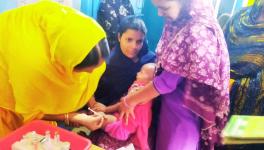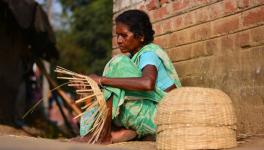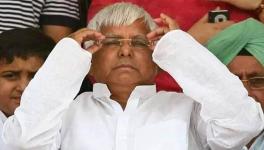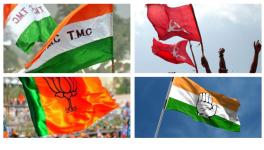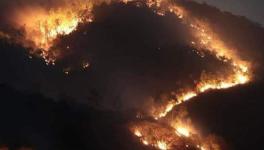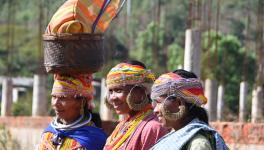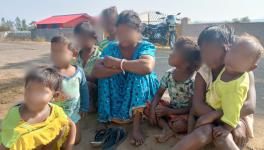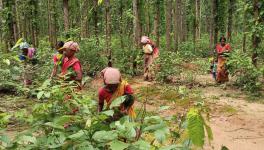Bandhna Parab: Heartbeat of Jangal Mahal’s Cultural Harmony
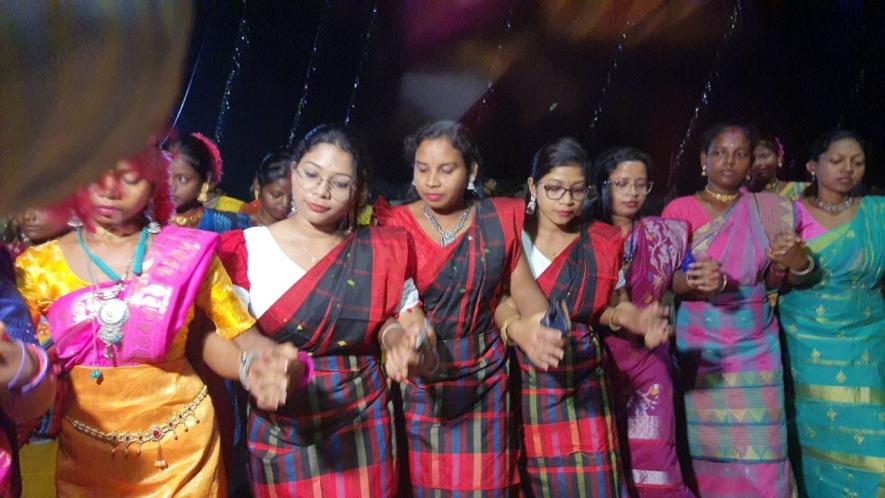
Dance and songs being performed at Barikul village of Ranibandh, Bankura.
These days, the resounding sound of Dhamsda, Madal (percussion instruments) can be heard in the Jangal Mahal areas of West Bengal. Dancing, singing, and entertaining guests are going on in a frenzy during the Bandhna festival, which will continue till November 15, the full moon day.
The festival is known as Sohrai Utsav among the Santal tribal community of Jangal Mahal. For the Kurmi community, it is known as Garoya festival. In the local language, these two festivals are collectively called Bandhna Parab (bonding festival). This ancient festival has been going on with full fervour since ages. Yet, its attraction refuses to diminish.
Sohrai and Garoya are primitive traditional festivals celebrated by the Santal, Munda, Bhumij, Kora, Sabar tribal communities, and Kurmi people (OBC -Other Backward Classes - category) of Bengal’s Jangal Mahal. It is observed in the Bengali month of Kartik (November), which marks the paddy harvesting season. The festival coincides with Diwali (the festival of light).
For the people of Jangal Mahal, the New Year begins with the Sohrai festival, which is celebrated with great enthusiasm to welcome new crops and pray that their land should yield crops throughout the year. The people believe that the cow is the biggest contributor to farming. So, one of the main attractions of this festival is to take care of cows separately, every four days. People thank their cattle for their hard work in farming and pray for their well-being.
The Santals and Kurmi community people live in 18 police station areas of Bankura, Purulia, Jhargram and Pashchim Medinipur of Bengal's Jangal Mahal, which are surrounded by deep forests and small-to-medium hills. A large portion of these areas celebrate the Bandhna Parab at this time of the year.
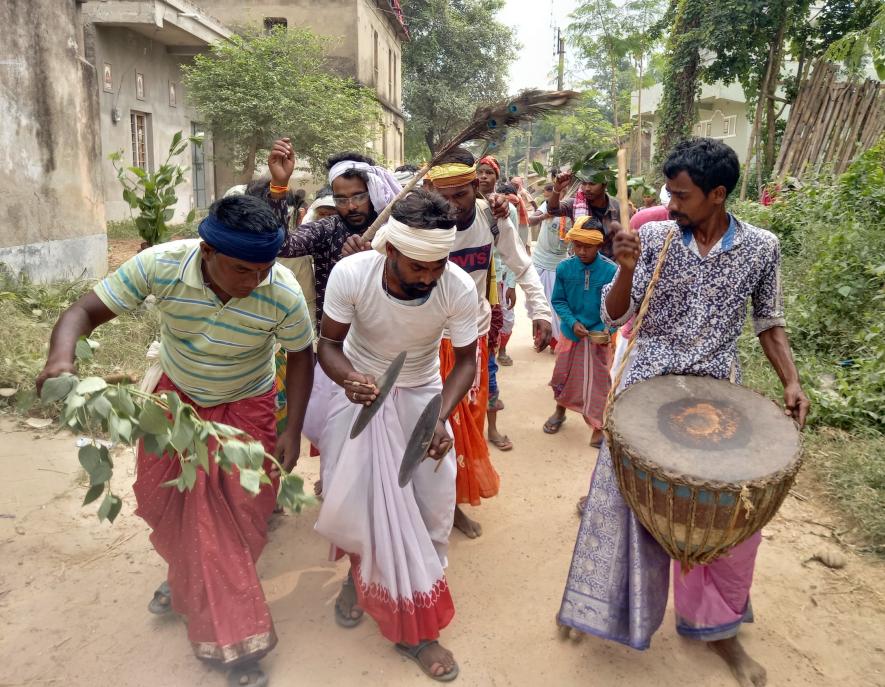
The Bandhna Parob at Manbazar Purulia.
In some other areas, this festival is held on the last day of the Bengali Poush month (January).
''It is basically a festival of harmony. It has nothing to do with Diwali. Humans need food to survive. People here have been celebrating this festival for years as an expression of joy while harvesting the foodgrain (paddy)," Rohini Mahato at Mallikdanga of Ranibandh and Lakshmi Kanto Tudu of Jhilimili told this reporter.
There are some characteristic differences in the celebrations between the Santals and Kurmi people. The latter celebrate this festival mainly for four days to pay respect to the cow in various ways. Aalpona (decorative drawings) is done in front of the door of every Kurmi-dominated house with liquid rice flour. The beginning of Diwali is on the night of Kali Puja (worship of goddess Kali), the first day of the Bandhna ceremony.
Cows are worshiped with songs that are locally called Ahira gan (song), and when these animals are tied to wood poles and games are played, these Ahira songs are sung. This game is locally called gorukhuta (cow play). The rest of the time, there is no dancing or singing.
The tribals -- Bhumij, Shabar, Kora, Lodha people -- also worship the cow like the Kurmis and sing for the cow and play around the pole. It is interesting that only certain groups sing this song. They are called Dhangira.
"We sing cow worship songs in Kurmali language. In the Ahira song, it is said that we have come to look after you (the cow) after crossing distant mountains. You have been farming all year round. We have brought nutritious Molta (a kind of grass) grass for your nourishment. Please eat, stay healthy. If you are healthy and strong, you will provide food for mankind,” said Ramkanai Mahato, a singer of Ahira songs, explaining the lyrics.

A cow being honoured in this festival at Deuli village, Ranibandh .
The interesting thing is that despite having their own language, when the people of Santal and other tribal communities perform their ritual with cows, they sing this Ahira song in Kurmali language. This Ahira song is one of the best examples of the harmony that has been created through this Bandhna Utsav around the Jangal Mahal.
“After the end of Amavasya, on the day of the start of Sukla Paksha (full moon fortnight), we wear new clothes and enter the cowshed to worship the pole where the cows stay. Saluk flowers (like lotus), rice cakes fried in ghee (clarified butter) are served. No mantras are recited during this homage ceremony. All equipment, including ploughs and spades used for cultivation, is cleaned. His/her (cow) body is cleaned, and horns are anointed with mustard oil and vermillion. Garlands are made by strewing paddy strands tied across their foreheads,” said Porna Mahato, a housewife of Sindurpur village. She said that when the puja (worship) gets over, the prasad (offering) is distributed among family members.

"Chatguri pithe” (rice cake) being prepared in Rospal village, Bankura .
Ranjit Mahato of Raipur reiterated that one of the important aspects of Bandhna festival was the worship of cows, which is considered the source of wealth and fertility. He said the word Garoya Parob (festival) came from worship of cows.
Jamuna Mahato, an elderly woman of Kadmagarh in Ranibandh, told this reporter that during Garoya Parab, rice powder is liquefied and mixed with a herbal fruit locally called Chita fal (sticky fruit) and aalpona is drawn with five fingers in courtyards. The cows are first taken on that aalpana, marking the respect given to cows.
The Santal community does not worship cows like Kurmis, but they also anoint their horns with oil and vermillion. The four- days festival includes various ritual activities., songs and dance.
“Sohrai or Bandhna festival is the biggest festival of the tribal community. In village after village in Jangal Mahal, people celebrate this festival of grain and cattle worship. One of the attractions of this festival is inviting relatives, especially the daughter and son-in-law, who are given new clothes. Wall paintings are done on every house. Since adivasis are nature worshippers, so pictures of trees, birds, various cattle are painted,” said Ganesh Murmu, a folk artist from Barishal village in Bankura, and Joytilal Kishku of Belpahari, Jhargram. The paintings are done with natural colours collected locally.
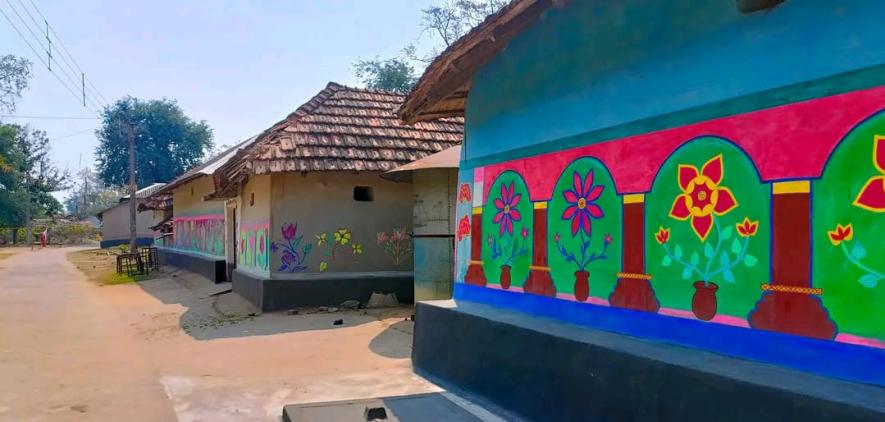
Paintings on the walls of houses in Banspahari areas of Jhargram District.
On the first day of the festival, their village priest of the Santals, locally called Naike, starts the religious worship in the village Jaherthan (worship place) where villagers gather. Baby hens are cut and cooked. Everyone eats this food there. After performing the ritual, people dance with the songs. On the second day, they slaughter goats and hens to pay respect to their ancestors. That is called jeldaga (meat rice), which is feasted on.
The third day is for the cow game, gorukhuta. The cow that had been cared for three days is tied to a strong pole and exposed to dead cow skin. After smelling it, the cow gets excited. At that time, Dhamsa, madal, and drums start playing along with the Ahira song. Two youths take the skin in front of the cow and play. The cow starts circling the pole in anger and excitement. Many people come to watch this game.
The similarities between the Kurmi and Santal communities in the Bandhna festival are that both play gorukhuta and bring home their daughters and sons-in-law. The effect of this festival is similar in villages and towns of other Jangal Mahal areas.
This is not only a festival of joy and gratitude but also a way of preserving and promoting a rich artistic tradition that showcases the creativity and skill of the Kurmis and other tribal men and women. It is a festival that celebrates the harmony between humans, animals, and nature. Therefore, this festival is considered bigger than the Sharodiya Utsav of Jangal Mahal.
The writer covers the Jangal Mahal region for ‘Ganashakti’ newspaper in West Bengal. The views are personal.
(All pictures by Madhu Sudan Chatterjee)
Get the latest reports & analysis with people's perspective on Protests, movements & deep analytical videos, discussions of the current affairs in your Telegram app. Subscribe to NewsClick's Telegram channel & get Real-Time updates on stories, as they get published on our website.









